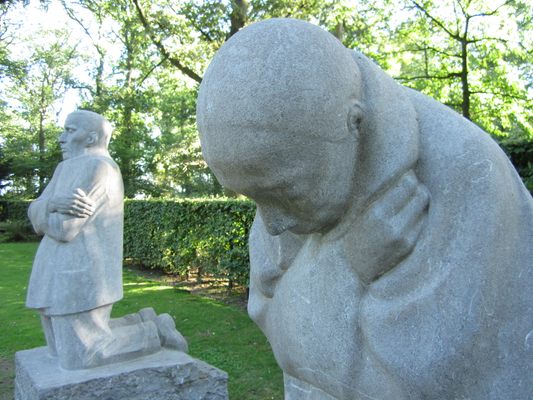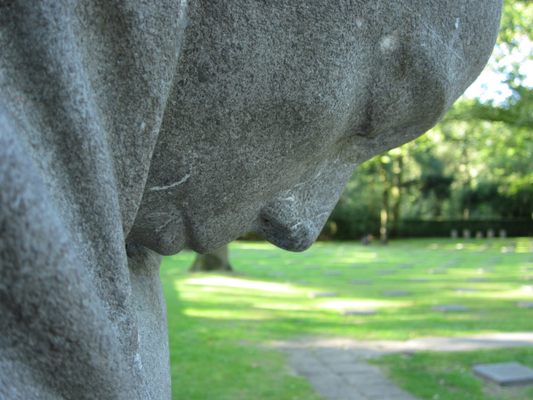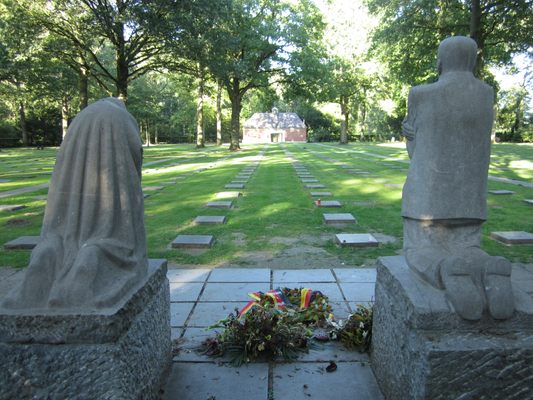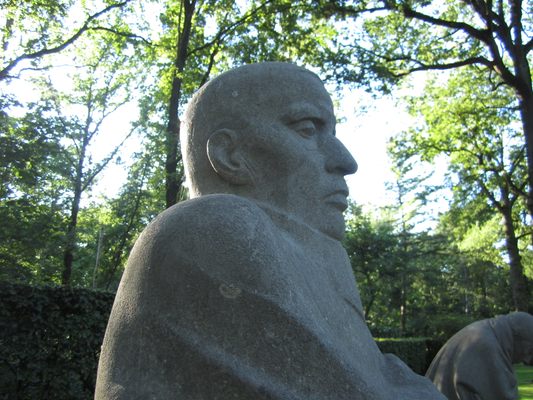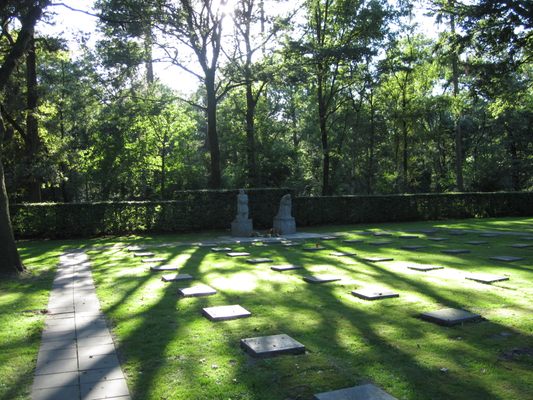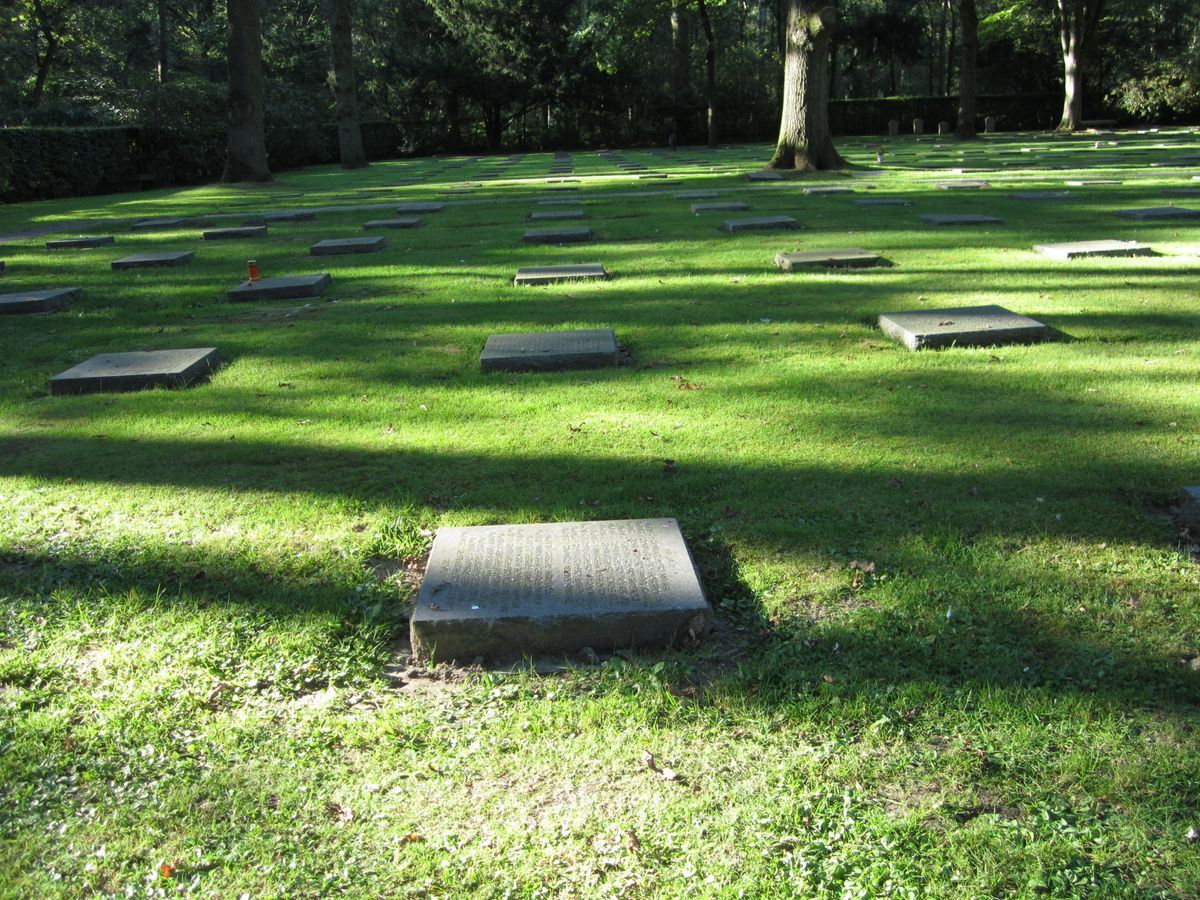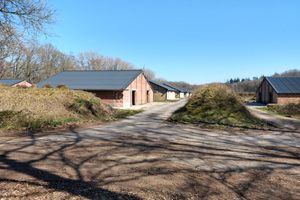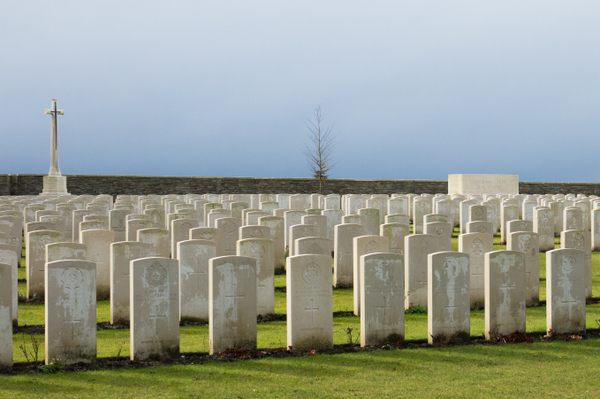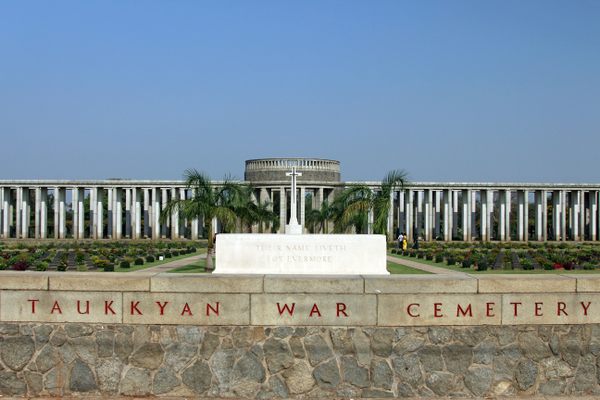About
Among the 25,638 First World War soldiers who rest at the Vladslo German Military Cemetery is Peter Kollwitz, son of renowned German artist Käthe Kollwitz, who was killed at 18 years old on October 23, 1914 near Langemarck in Flanders.
For nearly twenty years, Käthe Kollwitz struggled to find a way to memorialize her dead son, discarding draft after draft, and putting the project aside temporarily in 1919. When she returned to the project in 1924, she settled on two simple figures, a mother and father with the features of Käthe and her husband Karl, who would kneel in mourning before the graves. Visiting Peter's grave in 1926, she envisioned the sculptures across from the entrance, with "the whole cemetery before them." The atmosphere of the site, she wrote, "is of simple planes and solitude...Everything is quiet, but the larks sing gladly." When the memorial was completed in 1931, it was placed adjacent to her son's grave at the war cemetery in Roggevelde, but when the German graves in Belgium were consolidated in 1957-58, both Peter's remains and The Grieving Parents were moved to the larger cemetery in Vladslo.
Kollwitz's art had always been driven by a sense of solidarity with those who suffered. Her grief over Peter's death was complicated by guilt that developed later in the war. German parents had betrayed their children's idealism by asking them to give their lives for a war that was futile. The Grieving Parents kneel not just to mourn, but to ask forgiveness for this betrayal. When she visited the grave for the last time in 1932, Käthe Kollwitz "stood before the woman, looked at her - my own face - and I wept and stroked her cheeks."
Related Tags
Published
November 11, 2014
